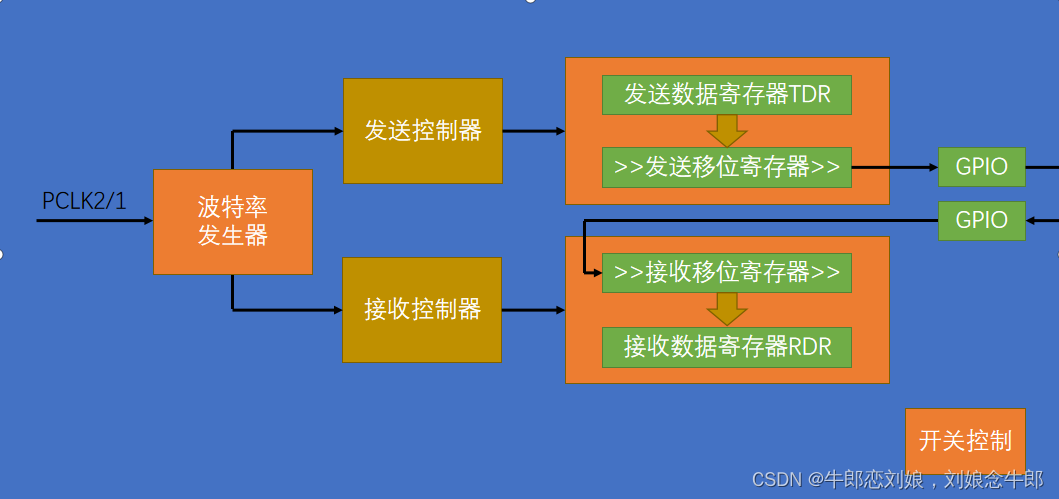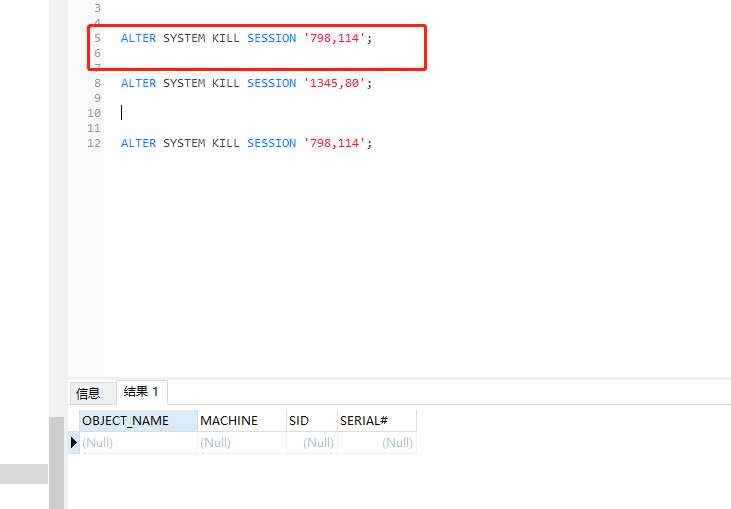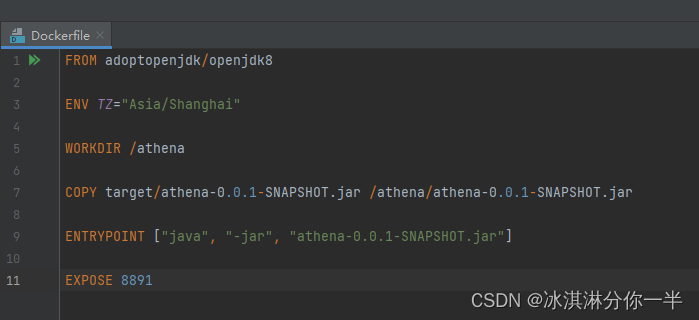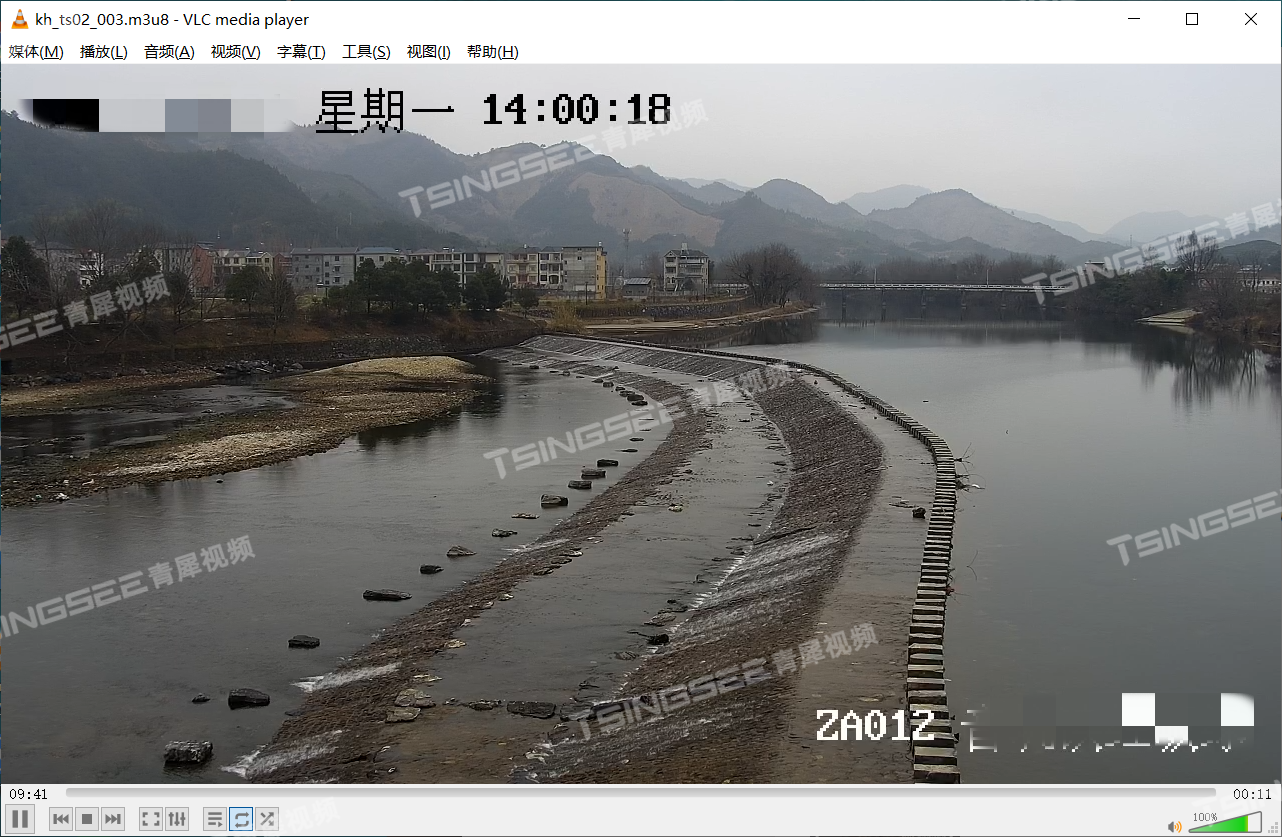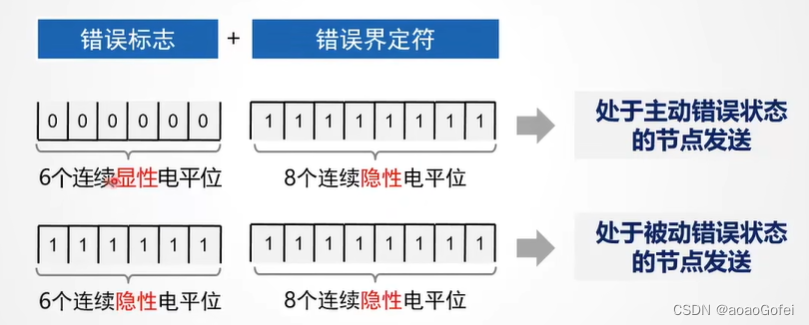USART
- 介绍
- 串口发送
- 使用工具
- 初始化
- 发送数据
- 接收数据
介绍
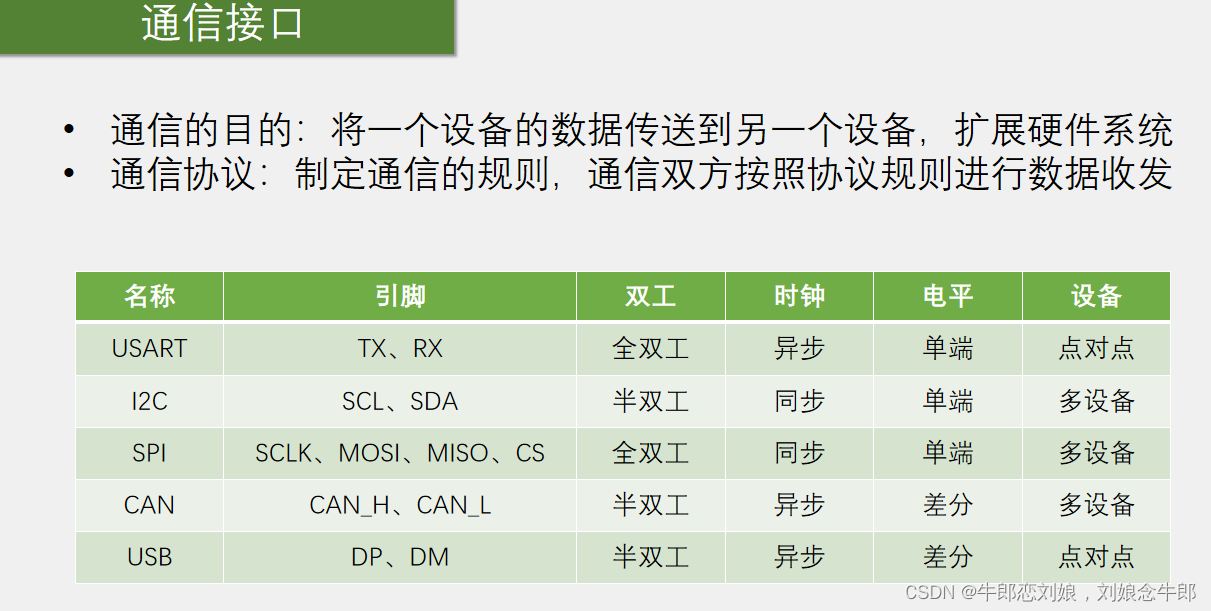
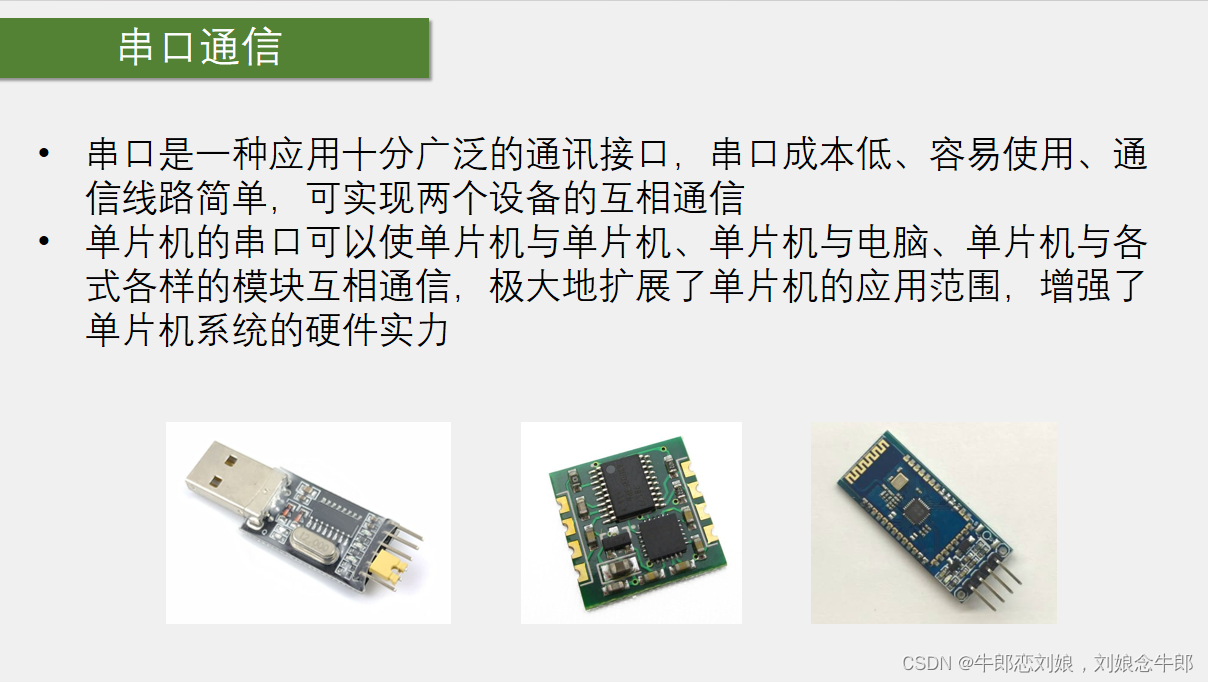

电平标准是数据1和数据0的表达方式,是传输线缆中人为规定的电压与数据的对应关系,串口常用的电平标准有如下三种:
TTL电平:+3.3V或+5V表示1,0V表示0
RS232电平:-3-15V表示1,+3+15V表示0
RS485电平:两线压差+2+6V表示1,-2-6V表示0(差分信号)
串口参数
波特率:串口通信的速率
起始位:标志一个数据帧的开始,固定为低电平
数据位:数据帧的有效载荷,1为高电平,0为低电平,低位先行
校验位:用于数据验证,根据数据位计算得来
停止位:用于数据帧间隔,固定为高电平


USART(Universal Synchronous/Asynchronous Receiver/Transmitter)通用同步/异步收发器
USART是STM32内部集成的硬件外设,可根据数据寄存器的一个字节数据自动生成数据帧时序,从TX引脚发送出去,也可自动接收RX引脚的数据帧时序,拼接为一个字节数据,存放在数据寄存器里
自带波特率发生器,最高达4.5Mbits/s
可配置数据位长度(8/9)、停止位长度(0.5/1/1.5/2)
可选校验位(无校验/奇校验/偶校验)
支持同步模式、硬件流控制、DMA、智能卡、IrDA、LIN
STM32F103C8T6 USART资源: USART1、 USART2、 USART3
串口发送
使用工具
USB TO TTL
初始化
RCC_APB2PeriphClockCmd(RCC_APB2Periph_USART1, ENABLE); //初始化USART外设
RCC_APB2PeriphClockCmd(RCC_APB2Periph_GPIOA, ENABLE); //由于USART外设在GPIOA 所以初始化GPIOGPIO_InitTypeDef GPIO_InitStructure; GPIO_InitStructure.GPIO_Mode = GPIO_Mode_AF_PP; // TX 输出设置为复用推挽输出 这里只用到了发送 GPIO_InitStructure.GPIO_Pin = GPIO_Pin_9;GPIO_InitStructure.GPIO_Speed = GPIO_Speed_50MHz;GPIO_Init(GPIOA, &GPIO_InitStructure);///usart初始化USART_InitTypeDef USART_InitStructure;USART_InitStructure.USART_BaudRate = 9600; // 波特率USART_InitStructure.USART_HardwareFlowControl = USART_HardwareFlowControl_None;USART_InitStructure.USART_Mode = USART_Mode_Tx; //需要发送还是接收 都可以选择USART_InitStructure.USART_Parity = USART_Parity_No; //校验位 不选择USART_InitStructure.USART_StopBits = USART_StopBits_1; //停止位 1USART_InitStructure.USART_WordLength = USART_WordLength_8b; //不需要校验 所以字长选择8USART_Init(USART1, &USART_InitStructure);//开启usartUSART_Cmd(USART1, ENABLE);发送数据
void Serial_SendByte(uint8_t Byte)
{USART_SendData(USART1, Byte); //发送数据byte 到 USARTDR 然后再发送给移位寄存器 最后一位一位的移出TX引脚while (USART_GetFlagStatus(USART1, USART_FLAG_TXE) == RESET); //等待传送到移位寄存器 //不需要清零 在send data时自清零
}重定向printf 使得printf输出到串口
int fputc(int ch, FILE *f) //由于 fputc是printf的底层 所以修改foutc函数
{Serial_SendByte(ch);return ch;
}发送数组跟字符串
void Serial_SendArray(uint8_t *Array, uint16_t Length) //
{uint16_t i;for (i = 0; i < Length; i ++) {Serial_SendByte(Array[i]);}
}void Serial_SendString(char *String)
{uint8_t i;for (i = 0; String[i] != '\0'; i ++){Serial_SendByte(String[i]);}
}
接收数据
初始化输入RX
GPIO_InitStructure.GPIO_Mode = GPIO_Mode_IPU;GPIO_InitStructure.GPIO_Pin = GPIO_Pin_10;GPIO_InitStructure.GPIO_Speed = GPIO_Speed_50MHz;GPIO_Init(GPIOA, &GPIO_InitStructure);接收
while (1){if (USART_GetITStatus(USART1, USART_IT_RXNE) == SET){RxData = USART_ReceiveData(USART1); OLED_ShowHexNum(2, 1, RxData,2);}
}
